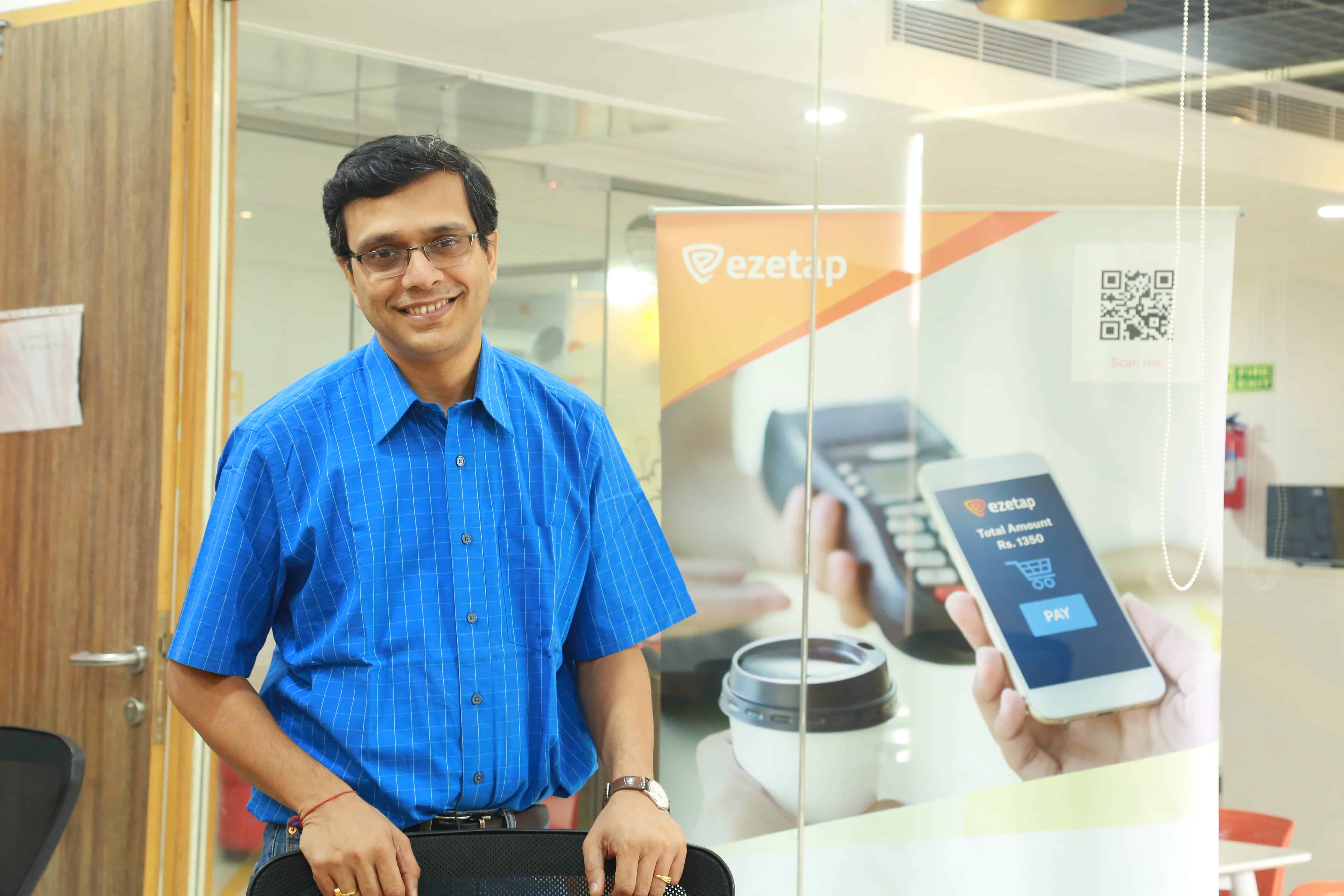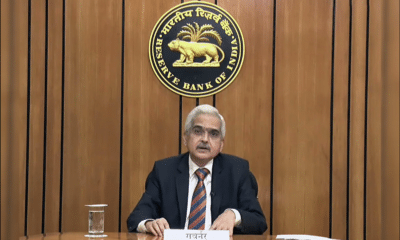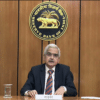Business
India is on the road to becoming a Cashless Economy says Bhaskar Chatterjee, Ezetap
Technology leads to change. These changes at times are voluntary and other times forced by the situation. One such instance is the Modi Government Demonetisation on 8th November 2016 which led to a forced adoption of digital payment platforms like PayTM, MobiKwik and more. Though many would say, it was a rubber band effect as people quickly returned to their old ways. COVID-19, on the other hand, is different; it is bound to change the way Indians pay, transact, interact, handle physical money forever. There is no going back to the old ways as it is changing things forever with a pre-2020 and a post-2020 era. Ezetap is one such player, a mobile payments company impacting how millions of people pay for goods and services daily.
With 2,60,000 smart service points on Ezetap’s platform and with customers ranging from brick-and-mortar retailers, e-commerce players, leading enterprises, and financial inclusion organisations, Ezetap processes over US$2 billion annually. We had an opportunity to interact with Bhaskar Chatterjee, Head of Product, Ezetap about digital transactions and cashless economy.
How can India transform from a cash to a cashless economy?
Its a long journey, but the journey has already begun. There are three parts to this answer. First, of course, you know the people who started using digital means of transactions are already seeing that its very convenient, especially in COVID times, we have seen that digital transactions have actually become a significant way in which people are paying. Even if you go to a retail shop, people are paying through UPI or QR code, on websites where people are ordering, like Amazon and Flipkart. The Cash on Delivery (COD) component has reduced a lot, from 50 per cent it has come down to like 20 or 30 per cent. So, and those are sort of way people realize the convenience of digital transactions. There are government incentives as well; for example, the government is trying to ensure that it has created a fund specifically for ensuring that there are a lot more positive terminals. And it’s trying to incentivize by ensuring that certain types of transactions like UPI and RuPay Cards have zero MDR. Those are also helping in adoption. Certain regulations have come recently, GST. Because of those regulations, the incentive to keep using cash has reduced significantly. So, I think three things have happened, there is the convenience of transactions, regular people are understanding there are government incentives for doing digital transactions that the government is pushing. Certain regulations have helped as well as undoing the transformation. Having said that, there is still a long way to go, but, definitely, the journey has begun.
Majority of India’s population are the middle class and the poor. In the middle-class societies, every second or third household has the luxury of a credit card. And the poor daily wage earners who are heavily dependent on cash for their families livelihoods. How can the government overcome this? How can businesses engaged in cashless transactions reach out to such households?
The thing is that for daily wage earners, what the PM did is that he started the Dhan Jan Yojana. And the idea was that everyone should have a bank account. Even if the amount of money kept in the account is low, just having a bank account, keeping your funds in that bank account actually help that the poor person because there is a way in which its an instrumental saving way. If you have cash, then you are more prone to spending, and it gets lost so, if it’s kept in a bank account, it’s saved, its actually more secure and also it grows slow. He can actually access that to put it in a savings scheme and all that. It just happened, the point is that for those people, the Dhan Jan Yojana actually helping them bank and save money in bank accounts. So you don’t actually need a credit card. Once you have access to a savings bank account, you can use multiple different instruments to access, so now there are actually innovations that are happening. Some companies take cash cards that allow people actually to access their funds at different locations. This particular innovation happened in Dubai. There are lots of Indian migrant labourers in Dubai. Earlier, they were all getting paid in cash. But now, what has happened is that they are all being given cards and salaries are being paid into those cards. As a result, the unbanked people, who are not so well to do are becoming banked, and once that happened, you know there are multiple benefits. They can use for savings, actually grow their savings and not just a credit card, they can use a debit card, they can use a cash card concept and eventually, they will also be able to use UPI. Understand that today, UPI primarily works on smartphones, a lot of people now have smartphones, but UPI will actually go into feature phones eventually. So using those capabilities, I think it is the right direction for the middle class and for the poor of India to go towards. And when that happens, you know there are two sides of a coin, there’s a side which is the people you know are actually trying to spend through digital means, and when that happens, the merchant side as well is trying to accept through digital means. We already see this through QR code in every shop, so, therefore, both of these sides will start growing, and one side growing will help the order, and the other side will also grow, enable the other to go cashless.
How many years will it take for India to evolve into a cashless economy?
This is difficult to answer, but you can look at other countries. One country that is totally cash-oriented is Japan. Even in Japan, now they have these concepts of pre-paid card that are actually accepted in all retail shops. So people prefer to load their cash cards and their train rides and retail places, everywhere that card is accepted so, although it’s still not something that happens overnight. But if you think about it, those countries that were very, very cash-intensive have become a little ahead of us, becoming digital instrument-related and to that end, even in India, people are investing in NCPI, RuPay wallet schemes where they are trying to sort of learning the same where Japan had; actually store your cash in the card as a wallet then use it in buses, in trains and retail locations as well, and that is a direction which India’s RBI and NCPI are already going.
Universities and colleges, nowadays, prefer e-payments for fees. But then, its time consuming for students and their guardians, as they have to complete formalities with the institutes as well as the banks. Is there an easy way out?
Already seeing that certain banks, schools and colleges going digital. So what they are doing is that there is a concept of, especially with schools and colleges, there is a concept of payment that happens in a certain frequency, schools don’t take entire year’s fee upfront, one has to pay quarterly or three times a year, so what’s happening is that there are certain changes that are coming, whereby they allow you to pay in a certain frequency, so you can say that I as a consumer would like to pay my school three times a year automatically, so what will happen is that one time, we will get that mandate from them and automatic payment will go fro your bank account to that institution on its own. What actually happens here is that the institutions don’t want to pay the discount rate because they want to say I want the customer to pay if I am taking digital, I don’t want to take less payment. So what’s happening is that there are two instruments – one is UPI, which has been introduced and there is something called NACH. E-NACH, something that has also come in for these payments. For education institutes, there will be ways in which scheduled payments will be made with very low transactions.
The internet plays a major role in e-transactions and cashless economy. In states like Kashmir where internet had been banned for up to 8 months and internet speed reduced to a mere 2G, how can businesses and the central government aim for a #DigitalIndia?
There are other states as well like Andaman and Nicobar Islands. There are two parts to this answer. Wallet, especially for RuPay card transactions in India, they are basically allowing offline transactions. What that means is that even if at a point in time, where internet connectivity is not available, like if I am travelling in a bus and the bus is going through a village where internet connectivity is not available, and I want to pay with a RuPay card. So I will tap the card, and the device will store the transaction, and as soon as it gets internet connectivity again, it will actually sink that transaction back to the service and make the payment. You would have seen something like that happen when Indigo Airlines, where if you had to pay with a credit card, they give you a receipt, but transaction actually happens when the plane lands. Similarly, it is becoming a standard process for doing offline transactions assuming that you will get internet in the next two to three days. So that’s the process put in place. However, due to certain geographies where connectivity is not in place, for example, there was no good connection. Recently, our Prime Minister Narendra Modi announced an undersea cable that will go underground, so the Nicobar Islands will get connected really well. Internet connectivity, in general, is required in India. We would need to get an internet connection to get connected; however, rest there are parts where there is no internet connectivity, the offline thing will sort of help out. I don’t want to comment on Kashmir because there are political angles there.
Some people are insecure about digital transactions. They feel their accounts will get hacked, and they will end up losing their hard-earned money. How can they be convinced that digital transactions are the way to go?
There are two parts to this answer. Firstly, that’s what the Reserve Bank of India did way back, and it added what is called Big Factor, It means the consumer will have to have two different pieces of information that will authenticate the transaction. For example the credit card and debit card, it needs to have the card number and actually in the case of the credit card, there is a chip in the card that authenticates that this is the card. In addition, there’s a PIN that’s in the customer’s hand, which given both these things together only then a transaction is allowed; otherwise, it won’t be allowed. This is sort of a way in which the RBI has ensured security which is quite high, and actually is on par with Europe and better than America. Where in America, if you have a student credit card, you can actually do a transaction, but in India, no. So the second part is, there is little education required as well. So, if the example you can sometimes hear that with UPI people get frauded, defrauded because the bad actor sends them to connect request and they end up sending them money instead of collecting money. Things of that nature where education is the traditional methods of banking, and card-based payments are reasonably secured. I mean, debit cards, people use all over India primarily in ATMs, but they do use it. Therefore, you have to tell them that when you withdraw money from an ATM and that works really well, its exactly the same, but education is required. But India is actually quite ahead in the world in terms of security of digital transactions.
Does the government need to amend policies or bring about new policies to make digital transactions more people friendly?
I think what the government needs to do is to ensure that incentives are available to both the sides of the coin – the consumers and the merchants are good. So, what’s happened right now if, for example, the government is trying to push for digital transactions, has made the transaction fee zero for UPI and RuPay cards. So, what happens then is the merchant is happy, the consumer is also happy, but the people who are providing the infrastructure to allow the payments, they cannot make money. So, I think the government needs to think about everyone involved in the transaction – the merchant, the customer and the people providing the infrastructure – such that everybody has some incentive. So the consumer will not mind if it’s zero instead of point-free, the merchant will be allowed MDR compared to credit cards and other means. And the person who is providing the infrastructure will also be okay because he is getting some money. The incentive structure is needed to be thought through.
Blockchain Technology: Since the digital transaction is being picked up at a fast pace, do you think it will give a chance to blockchain to take off as it should in India?
I think blockchain is a very interesting technology, especially in terms of doing transactions with parties that are not known to each other or where a ledge is required for all transactions. I think there are some opportunities that are interesting, for example, in doing international transactions of money, things of that nature. But I think the acceptance needs to come for using this across the board. It is that acceptance is not yet there for all parties. Although the technology is very interesting, the acceptance for the merchant and consumer, once it starts giving up, only then it will really take off, and I think that is a little while away.
Digital transactions – I spoke about convenience and incentives, the very interesting thing that is happening is affordability, discounts, cashback happening, they are not just government, but companies are trying to make and provide incentives for digital transactions. Multiple parties can participate in the transactions, EMI, affordability cashback also become enabled, and that also helps in incentivizing digital transactions, and those are the kind of things that companies need to do.











































Pingback: Branding holds more value in present techno-age and COVID-19 times, says Manoj Soni | The Plunge Daily